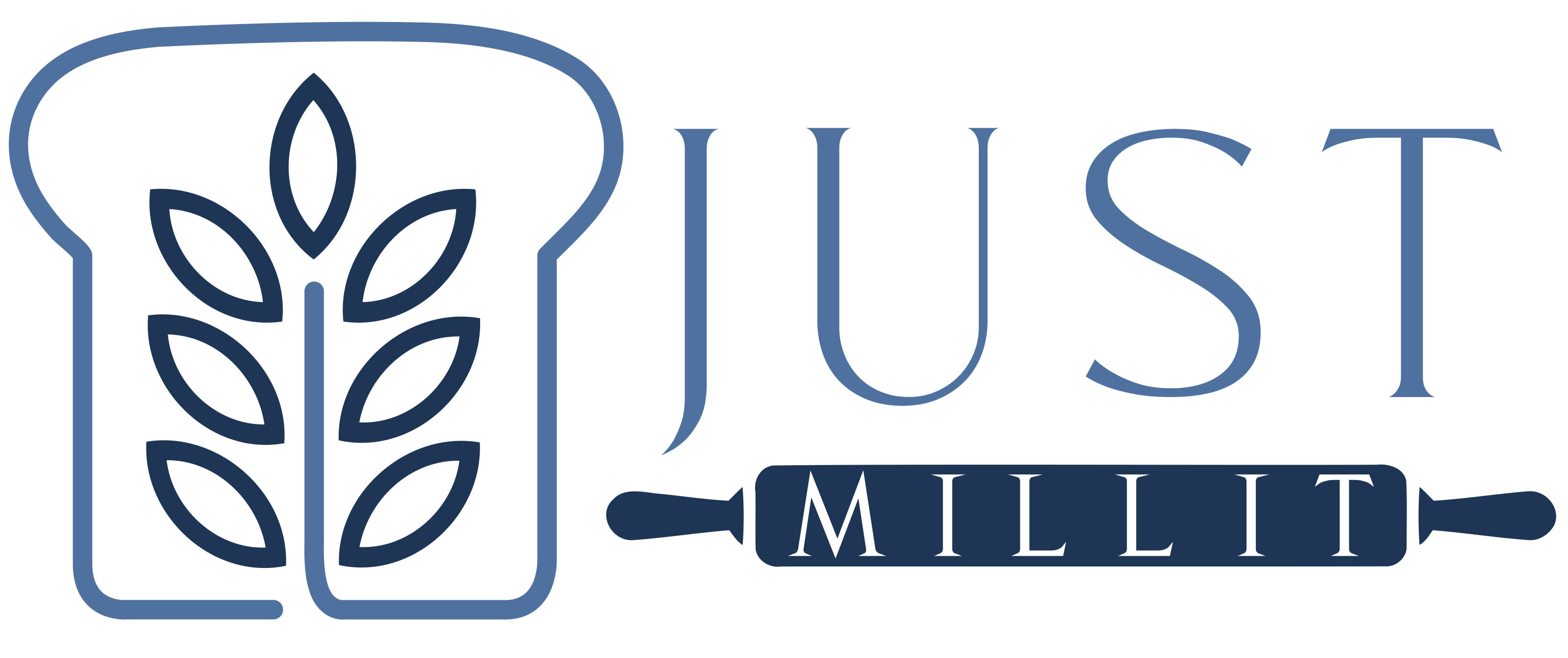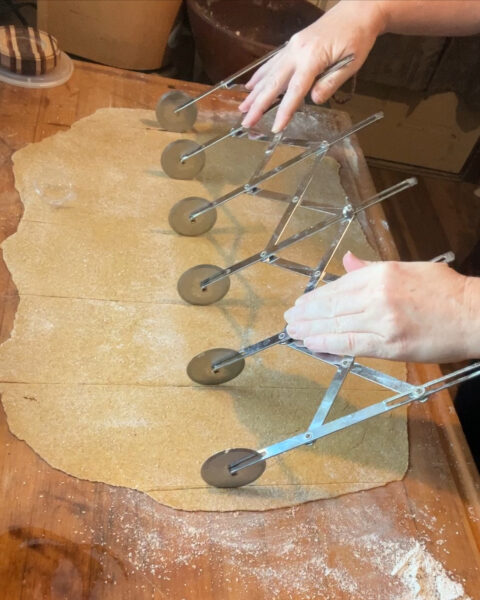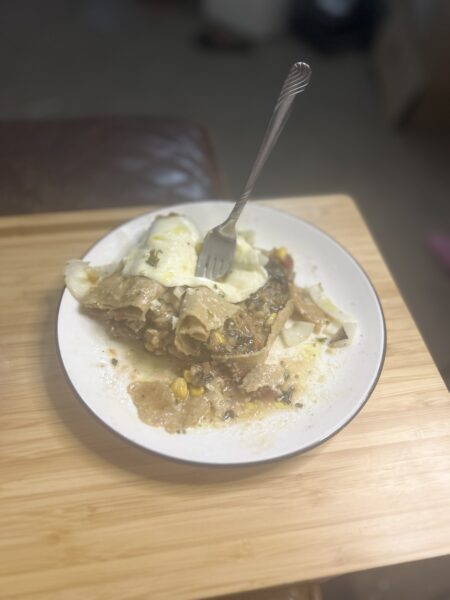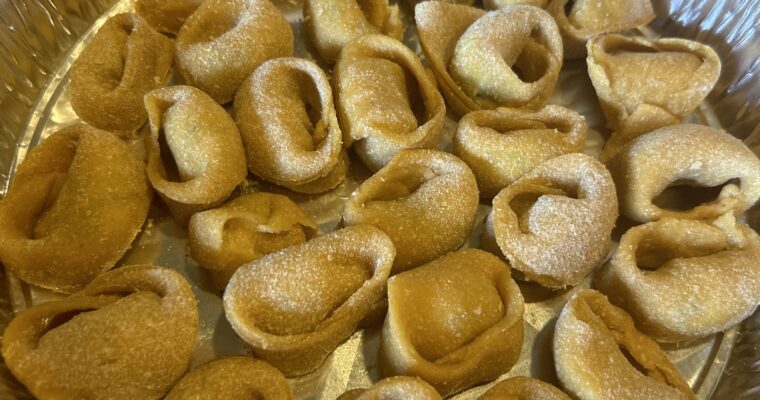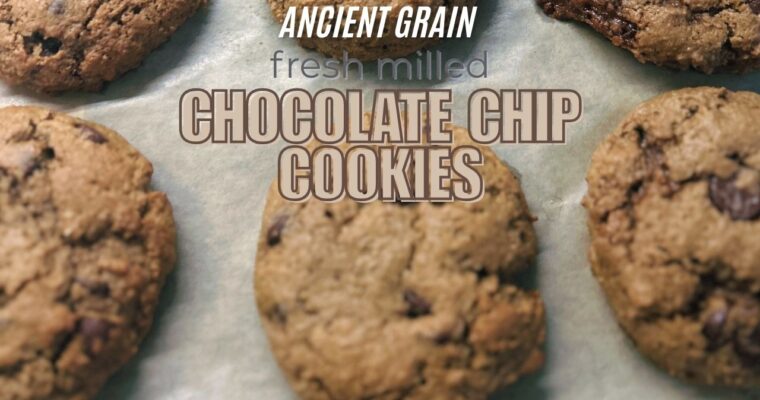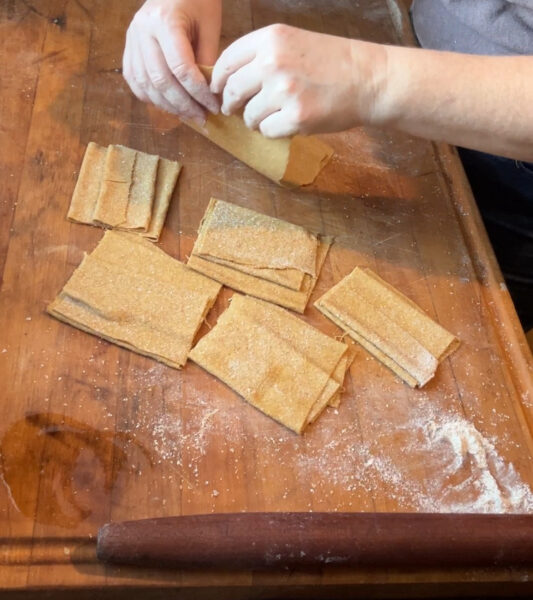
If you’ve been with me for a while, you know I refer to Spelt grain as the grain Superhero. It can do well in just about any category, even though it’s best used in the pastries category. I’ve made 100% Spelt Bread with it plenty of times, and it’s one of the favorites at our local bakery, lemon spelt pound cake with spelt are just amazing, and today – I made the most delicious 100% spelt pasta, and it did not disappoint with it’s slightly sweet flavor and tender noodles.
With only two or three ingredients, this is quick and easy to prepare. I used a pasta bicycle, which makes it easy to cut pasta of varying widths quickly, as well as perfect squares for ravioli! I was gifted this one for my birthday, but this one on Amazon looks just like it and is affordable.
Pasta Bicycle: https://amzn.to/48c6DqK
To mix the dough, a danish dough whisk is perfect for a sticky job like this one if you don’t want to get your hands dirty.
Danish Dough Whisk: https://amzn.to/408JP9b (this one is on sale for a limited time!)
Can I use Hard Wheat, Kamut, or Durum?
No, but you can use any of these instead.
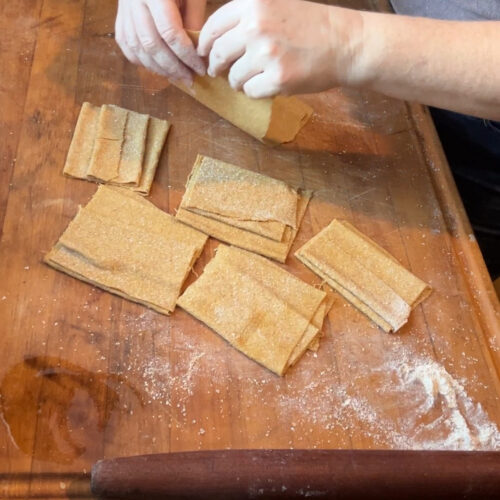
100% Spelt Hand Rolled Pasta
Ingredients
- 155 g grain, spelt milled fine
- 2 whole eggs
- 1 pinch nutmeg (optional)
Instructions
- Mill the flour.
- Crack 2 eggs into the flour.
- Grind some fresh nutmeg, if you prefer.
- Mix with danish dough whisk, then with a strong spatula or by hand.
- If kneading with a mixer, use the dough hook, and knead for 2-3 minutes.
- If kneading by hand, mix for 6-8 minutes or let the dough rest for 15 minutes before kneading for a minute or two.
Rolling the pasta
- Mill a little extra spelt flour, and dust your cutting board with it.
- Place the pasta on the floured board, then flip it over to lightly dust both sides. Roll out the dough from the center toward the ends in 4 directions.
- Continue to re-flour the board when it doesn't have flour, unless the dough is not sticking at all.
- Cut the dough into 6" wide strips of dough, and fold them gently over on itself.
Cooking the Noodles
- Using a silicone spatula or rounded handle of a wooden spoon, gently pick up the noodles, one at a time, from the workbench and place it in a pot of salted, boiling water. Leave it for a few seconds, and gently remove using the same utensil. Return the pasta to your workbench for filling, and repeat for all other noodles.
Filling the Noodles
- Make sure the filling you're using isn't too wet, and that it's been pre-cooked. Place a scoop of filling near a short end of the noodle, then roll it over the filling and so it overlaps. Cut the dough. Repeat until you fill all the noodles.
Baking
- What you do from here is up to you! I placed mine in a baking dish, layering with pecorino romano cheese, then topping with onions, tomatoes, extra virgin olive oil, lambrusco vinegar and a little half and half. Near the end, I melted some fresh mozzarella on top. You could simply fill with ricotta, egg, and cooked sausage or beef, and then top with red sauce, or fill with ground turkey, peppers and onions and top with a white sauce. Endless pastabilities!
